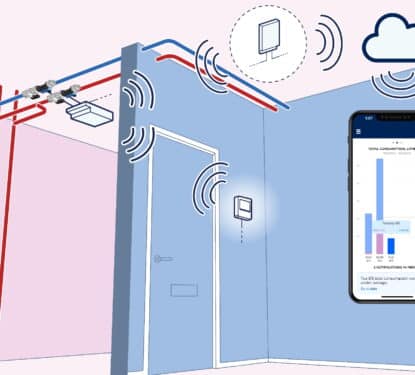Late last month, the ASHRAE BACnet committee, Project Haystack and the Brick initiative announced they are actively collaborating to integrate Haystack tagging and Brick data modeling concepts into the new proposed ASHRAE Standard 223P for semantic tagging of building data.
Defined as “designation and classification of semantic tags for building data” the ASHRAE Standard 223P provides a dictionary of semantic tags for descriptive tagging of building data including building automation and control data along with associated systems. By integrating Haystack tagging and Brick data modeling concepts with the upcoming ASHRAE Standard 223P, the result will enable interoperability on semantic information across the building industry, particularly in building automation.
This landmark unified effort aims to formally standardized an application data modeling solution which can be implemented in a variety of ways. It could be used for exchanging data over established communication protocols like BACnet, for example, or be applied on data stored in databases and cloud applications. Ultimately, ASHRAE Standard 223P is intended to be adopted as an ISO standard.
In addition to engineering and automation efficiency improvements, machine-readable semantic descriptions of data will provide a single and widely used global standard. It is expected to enable broader interoperability among applications – creating a competitive marketplace to the benefit of building owners.
Energy analytics, project implementation, and strategic advisory services firm Altura Associates, was an early adopter of Haystack. “Haystack tagging has been a critical component of our standards and workflow to enable scalable, extensible, repeatable processes. We use it on every building project,” said Jim Meacham, Altura’s Principal and Co-Founder. The firm is now pioneering a new class of service, a full-lifecycle asset management in a tag-based environment.
“In traditional building energy management practices, analysts use Excel spreadsheets to create hierarchical and relational databases of meter and submeter data associated with the equipment,” said Meacham. “With open APIs and Haystack, we have graduated from Excel spreadsheets. We now base our workflows around analytics and targeted feedback to the right people. Thoughtful implementation of tag libraries and comprehensive data management allow the use of a platform like SkySpark to centralize critical asset data.”

Altura has rapidly grown their database of active building analytics implementations to over 50 million square feet and tens of billions of time-series data points. They are the first to admit that they would not be able to effectively manage the portfolio without Haystack, and last year they were recognized for their work in the first Project Haystack Award based on the ControlTrends poll.
By using the Haystack-enabled data platform that Altura’s team implements during commissioning and retrofits, they are able to gather detailed operational information from the bottom up. Then by aligning the tagging and engineering processes, the firm has been able to garner greater impact from energy reporting, thereby reducing utility costs and gathering wider-ranging and deeper insights when analyzing building operational data.
“We’re finding ways for our customers to not only run their buildings better; but, in some cases, to run their businesses better,” said Meacham. “Because we implement the Haystack standard in the design phase of new construction projects, the database is built on a standard framework throughout construction and operations,” he continued. “Executing with these data management tools takes more skill than simple Excel; however, we are seeing a broad range of business analysts, building operators, engineers, and project managers successfully gain these skills with minimal training and no programming experience.”
The first public review of the initial draft of ASHRAE Standard 223P is envisioned for late 2018. Hopefully its influence should organically grow with adoption, especially with contributions from the major building automation brands. Once tagging methodologies have been agreed we can expect metadata to migrate into the hardware, making it native to the system. Once these elements are in place we could expect Standard 223P to trigger a significant transformation.
“The bottom line is that transformative cost savings and process improvements are possible when data standards are allowed to break down the barriers that form between different commercial equipment and software in a building,” said Meacham. “Haystack is empowering exactly this sort of transformative work and is only set to become more effective as adoption grows and the ASHRAE unified data semantic modeling effort continues.”
Error: Contact form not found.



